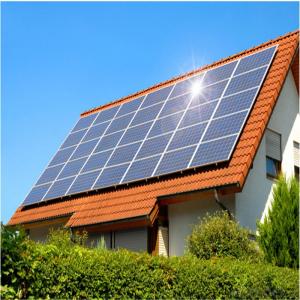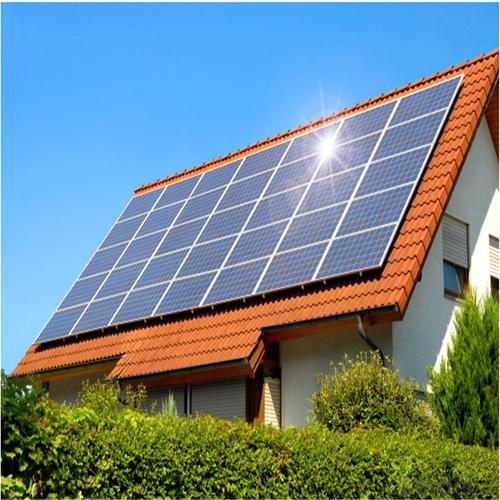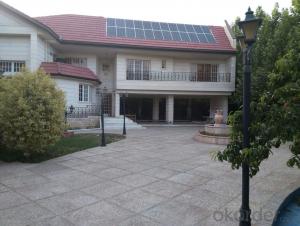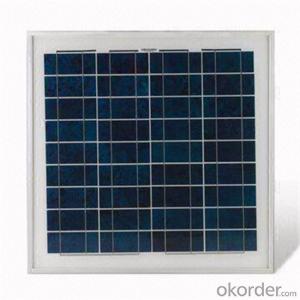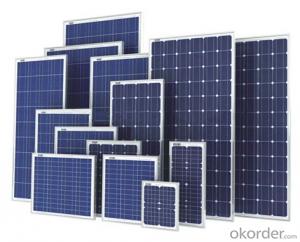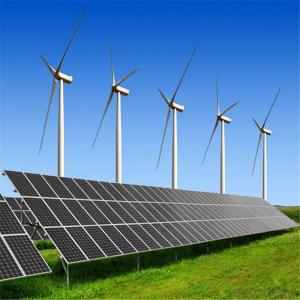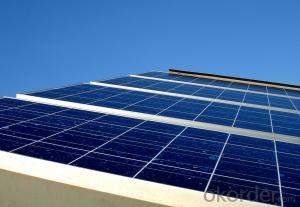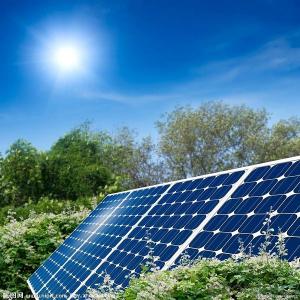30 Watt Roof Shingle Solar Panels - Photovoltaic Poly Solar Panels
- Loading Port:
- China main port
- Payment Terms:
- TT OR LC
- Min Order Qty:
- 200 watt
- Supply Capability:
- 500000 watt/month
OKorder Service Pledge
OKorder Financial Service
You Might Also Like
Specification
Instruction
1) Product name: solar panel / module
2) Solar cell: Mono-crystalline / Poly-crystalline / Amorphous
3) Tempered glass laminated with aluminum frame
4) Life time: 20 - 25 years
5) Temperature co-efficiency: A=+1,46mA B=-79mV, Rp/p=-0.43
6) Power specification at 1kW/m 2, AM 1, 5
7) Output cable: multi contact connectors
8) Construction:
a) Front: High-transmission 32mm tempered glass
b) Back: TPT
c) Encapsulant: EVA
9) Frame: aluminum
10) Certification: CE, TUV
Feature
1. High cell efficiency with high quality crystal silicon materials.
2. Long-term stability and reliability.
3. High Transmission, Low Iron Tempered Glass enhanced stiffness and impact resistance
4. Unique Aluminum frame designed for easy Installation and durable requirement
5. Advanced cell encapsulation materials to offer efficient protection
6. Outstanding electrical performance under high temperature and low irradiance conditions
7. Anti-aging of the EVA(polyethylene - vinyl acetate), high-performance crystalline silicon solar cells, good Weather resistance TPT (fluoroplastics composite membrane) by pyramid ,good Weather resistance and anti-UV, hail, water-proof capacity.Images
Imagins
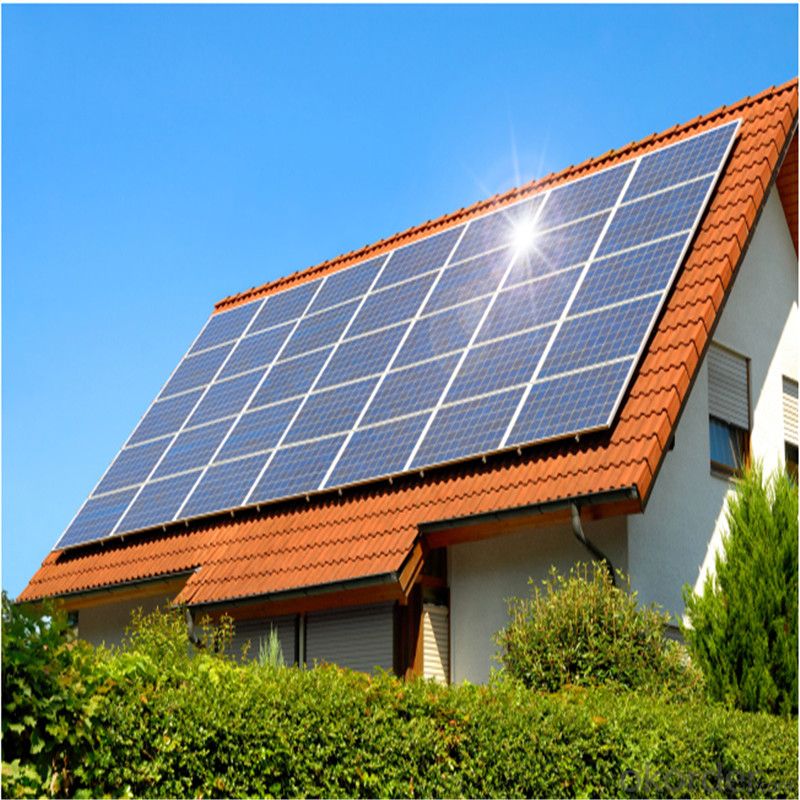
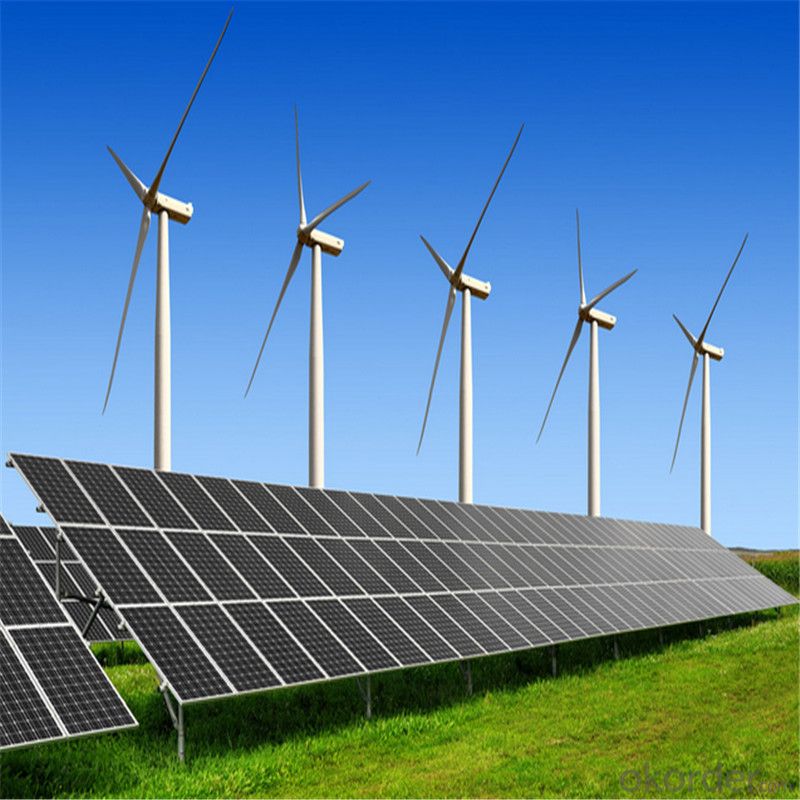
Specification
Type | CNBM Solar Polycrystalline Series II (235W—245W) | ||
Materials | Silicon | ||
Size | Length | Width | Height |
1640 | 992 | 40 | |
Guarantee | 12 yrs free from defects in materials and workmanship No less than 90% within 10yrs and no less than 80% within 25yrs TUV(IEC61215&IEC61730), CE, UL | ||
Application | Photovoltaic/solar/ green energy/energy saving | ||
Descriptions | 1.High efficiency crystalline silicon solar cell. Even if under the weak light, the solar module can produce maximum power output. 2.Tempered glass (toughened glass): Anti-reflecting coating and high transmission rate glass increase the power output and mechanical strength of solar module. 3. EVA and TPT: Using high quality EVA and TPT to prevent destroying and water. 4. AI frame: Without screw, rner connection. 6 holes on the frame can be installed easily. 5. Junction box: Multi function junction box with water proof. 6. Long lifetime: ≥25 years; Less power decrease. 7. Good performance of preventing from atrocious weather such as wind and hails. 8. Resisting moisture and etching effectively, not effected by geology. 9. The certificate issued by international authority: UL, TUV, IEC, CE.
| ||
Packaging Details: | 26pcs/pallet, 28pallets/ 40HQ Our solar panels are packed in cartons, and then pallet. Shipping by sea or by air are both ok, it up to customer’s chose. We’d like to inquiry the freight cost for customer after be informed exact quantity and destination address. | ||
FAQ
We have organized several common questions for our clients,may help you sincerely:
1). What’s price per watt?
A: It’s depends on the quantity, delivery date and payment terms of the order. We can talk further about the detail price issue. Our products is high quality with lower price level.
2). Can you tell me the parameter of your solar panels?
We have different series of cells with different power output, both from c-si to a-si. Please take our specification sheet for your reference.
3). How do you pack your products?
We have rich experience on how to pack the panels to make sure the safety on shipment when it arrives at the destination.
4). How long can we receive the product after purchase?
In the purchase of product within three working days, We will arrange the factory delivery as soon as possible. The perfect time of receiving is related to the state and position of customers. Commonly 7 to 10 working days can be served.
- Q: Can solar panels be used in areas with high humidity?
- Yes, solar panels can be used in areas with high humidity. While high humidity may affect the efficiency of solar panels to some extent, they can still generate electricity. The performance of solar panels in humid environments can be optimized by using materials that are resistant to moisture and by ensuring proper installation and maintenance.
- Q: I remember hearing somewhere that solar panels may attract light rays away from plants thus having a potentially negative effect on the plants. I can't remember where I heard it but I'm curious if there is any truth to it.
- if that were true, then anything that absorbs the suns rays do the same thing. Doesn't make any sense to me.
- Q: This is the cenario. Your yearly energy use comes by mail and it states that the total amount of energy used your household is 7000kWh.Then you make the decision of switching to get solar panels. The question is what area should your solar panel be given that the average annual length of daylight is 2.0.
- It is not that simple. There are 3 main types of solar cells. Monocrystalline silicon is the most efficient and produces the smallest solar cells, and therefore the smallest panels. Poly-crystalline (or multi-crystalline) silicon produces the next most efficient type of cells and are a popular choice. Amorphous (or thin-film) silicon uses the least amount of silicon and also produces the least efficient solar cells. This means thin film system take up more area than the other two; an important factor to consider in relation to possible future upgrades; i.e. if you'll have enough space left to do so. The North (in the Southern hemisphere) or South (in the Northern hemisphere) facing roof collects the most energy. So this biases the roof area required. Your energy usage can be changed. Hot water (a major energy user) could be better using direct solar heating with peak demand boosting, either from mains or solar. There are other possibilities, either to reduce demand or to provide energy from other sources. Not all sunshine hours are equal. Hours around midday are far more productive than hours later in the day. This must be factored in.
- Q: can u use a light bulb instead of the sun to power a solar panel
- Yes, but why? If you've got the light-bulb, you've already got more electricity than you will get out of the solar panel.
- Q: I know what they do and how they work, but at this point they're expensive, don't always produce enough electricity as needed, and can't be used when there's no sun, as in half the day. Wouldn't wind power seem so more efficient? Or if they do use solar panels, how about putting them in the desert. But I really believe that research money should go to fusion generators since that's the future and the answer to our problems. Which is best in your opinion?
- There is not a yes or no answer. But for the majority of the population it is a definite no. Because the energy needed to make a solar panel is more than the energy that a solar panel can return in its life time. so No for cities and urbanized areas because there is already existing infrastructure therefore you'll be wasting more energy getting them installed. And it is better and more efficient to have the more common energy sources for populated areas. However that being said it would be more efficient if you live in a remote area as it would not be worth it to build a huge electricity grid just to power one small house in the middle of no where.
- Q: Someone Said It costed them 50,000 To Install Solar Panel In their House and 35,000 For Installation. Is that true?
- It costs more than they will ever save you in electricity cost.
- Q: I am in the market for buying a home. There is one for salke that actually has solar panels on top. How are they used? Do you need to pay for gas and electric still. Does it really light up the house and keep it warm. WHat about the AC keeping hte house cool in the summer does it work for that too? Please explain in solar for dummy terms. I haveno clue about solar panels other thatn the fact that it needs sunlight to run.
- Okay--here it is (without the techie buzzwords!) Solar power has a start up cost--the panels and related equipment. But the amount it cost to operate is virtually zero--pretty much jsut servicing th equipment o keep it working properly--much as you do any other appliance. How much electricity you will still have to buy depends on four things: a) how much your system can produce. If you have a 4000 watt system, you'll still buy a fair amount of power. Abigger one--and you will need less from the power company b) how efficient you (your home and appliances are). The more efficient, the less electricity you use. Obviously, things lie CFL bulbs are very helpful here c) Are you willing to invest in a battery storage system to store electricity from the system for use at night? Right now, that's still pricey. But these are starting to come on th emarket more. If you aren't ready to do tha tnow, you can always add it in later. d) can you sell excess power back to the power company.? In California, the law requires utilities to do this--but its not a universal yet, so it depends on where you are. How this works: you are still hooked up to the power company. Any time you need more power than the solar system produces, yur system jst draws it off the power grid--jsut as always. But--any time you are using LESS than the amount of power your system is producing, the excess automatically feeeds back into the electric grid and a special peter credits you with the power. There are cases wwhere people have goene on a long vacation in California and when they got home, the power company owed them several hundred dollars! You'll need to do some research, price thngs, take your own lifestyle into account, and decide what the best choices for you are. It sounds complicated--and to an extent it is. But the reason is tha tyou have a lot of choices tha tyou can make work to your advantage, instead of jsut writing a fat check to the power company every month!
- Q: Actually I want to convert my home electricity on Solar Panel to cut down electricity costI have 2 AC's, a refrigerator, 3 Television, 2 Computers, 4 Fans etc
- good okorder lots of good ideas there
- Q: How much would it cost (approximately) to convert my home (3 bed. 2 bath) to a green home that is run entirely upon solar panels on my roof? From the panels through installation does anyone know a price break down?
- Check your electric bill, and see how many kilo watt hours you have been using for the last year. That will give you a clue as to how many panels you will need in the array,and how many batteries you will need, what size inverter is needed plus would you want a true sine wave or modified.And that's just for starters. But of course you might get a break from your electric Co.(Rebate) also from your state,and possibly something from the Feds. I have installed on the travel trailer a 25 watt panel($850) a 22amp.charge controller ($45) a pair of Trojan 425 watt 6 volt batteries ($300 each) and a 2000 watt inverter modified sine wave ($2000).The only thing I can not run with this set up is the A/C which requires 3000 watts of power. So as you can see your project could get very expensive. I hope this sheds enough light on the subject for you.
- Q: I was just wondering what the minimum and maximm charging voltage and ampere is for li ion batteries. If i connect a solar panel, which only gets enough sunshine to generate voltage, will that still charge the battery, or would i have to series connect solar panels until they together reach 3,7volt?
- One lithium cell requires 4.2V to obtain its full charge, Never exceed 4.2V ! Output from solar panel if below 3.7V , nothing charge to lithium. Total charging time until the cell is full depending on the AH rate of cell and the charging current that solar panel can be provided. Suppose cell is rate 5AH, and the charging current from solar panel under full sun shine can maintain 0.5A ( use solar panel short circuit current rate from its specification as a reference ) , hence, 0 hours is enough. And be sure the solar panel can maintain 4.2V output at 0.5A . Remember, over charge lithium cell one time might reduce its life into half . Therefore, let the solar panel output passing through a precision regulator to maintain output is 4.2V is the best way, because, as cell reaches 4.2V , no more charging current is forced into cell ( automatic stop charging ). If you do not have the knowledge to make this simple variable voltage regulator with LM37K ( if you choose this way, buy solar panel output has at least 2V) , you may choose to do it manually by install a current meter and a variable resistor in series between the panel output to cell. By adjust the value of resistor, charging current can be controlled ( if you choose this way, buy solar panel output has as less as 6V ). Count the charging time with a clock and adjust the charging current from time to time to maintain 0.5A .
Send your message to us
30 Watt Roof Shingle Solar Panels - Photovoltaic Poly Solar Panels
- Loading Port:
- China main port
- Payment Terms:
- TT OR LC
- Min Order Qty:
- 200 watt
- Supply Capability:
- 500000 watt/month
OKorder Service Pledge
OKorder Financial Service
Similar products
Hot products
Hot Searches
Related keywords
